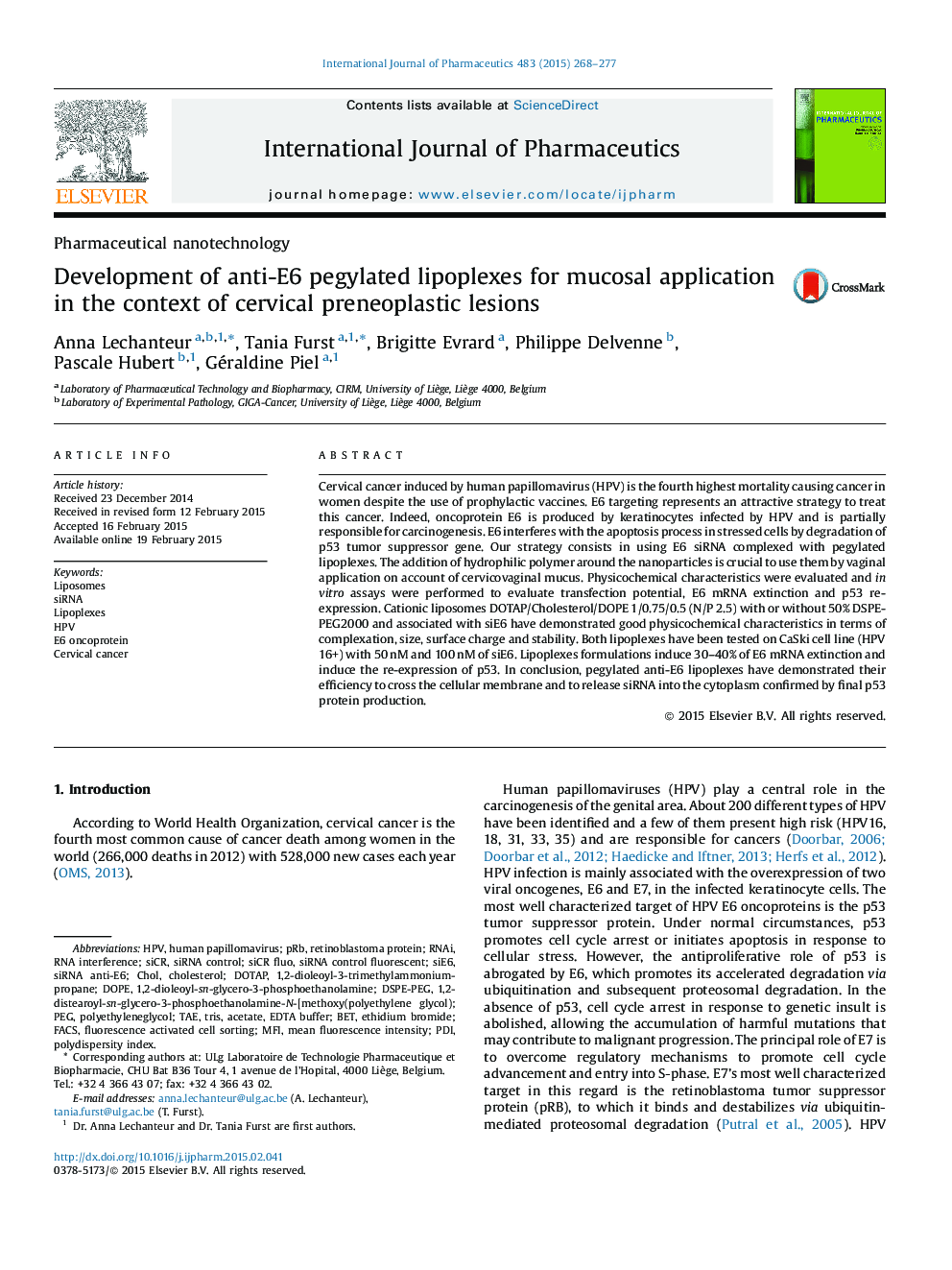| Article ID | Journal | Published Year | Pages | File Type |
|---|---|---|---|---|
| 2501508 | International Journal of Pharmaceutics | 2015 | 10 Pages |
Cervical cancer induced by human papillomavirus (HPV) is the fourth highest mortality causing cancer in women despite the use of prophylactic vaccines. E6 targeting represents an attractive strategy to treat this cancer. Indeed, oncoprotein E6 is produced by keratinocytes infected by HPV and is partially responsible for carcinogenesis. E6 interferes with the apoptosis process in stressed cells by degradation of p53 tumor suppressor gene. Our strategy consists in using E6 siRNA complexed with pegylated lipoplexes. The addition of hydrophilic polymer around the nanoparticles is crucial to use them by vaginal application on account of cervicovaginal mucus. Physicochemical characteristics were evaluated and in vitro assays were performed to evaluate transfection potential, E6 mRNA extinction and p53 re-expression. Cationic liposomes DOTAP/Cholesterol/DOPE 1/0.75/0.5 (N/P 2.5) with or without 50% DSPE-PEG2000 and associated with siE6 have demonstrated good physicochemical characteristics in terms of complexation, size, surface charge and stability. Both lipoplexes have been tested on CaSki cell line (HPV 16+) with 50 nM and 100 nM of siE6. Lipoplexes formulations induce 30–40% of E6 mRNA extinction and induce the re-expression of p53. In conclusion, pegylated anti-E6 lipoplexes have demonstrated their efficiency to cross the cellular membrane and to release siRNA into the cytoplasm confirmed by final p53 protein production.
Graphical abstractFigure optionsDownload full-size imageDownload high-quality image (255 K)Download as PowerPoint slide
